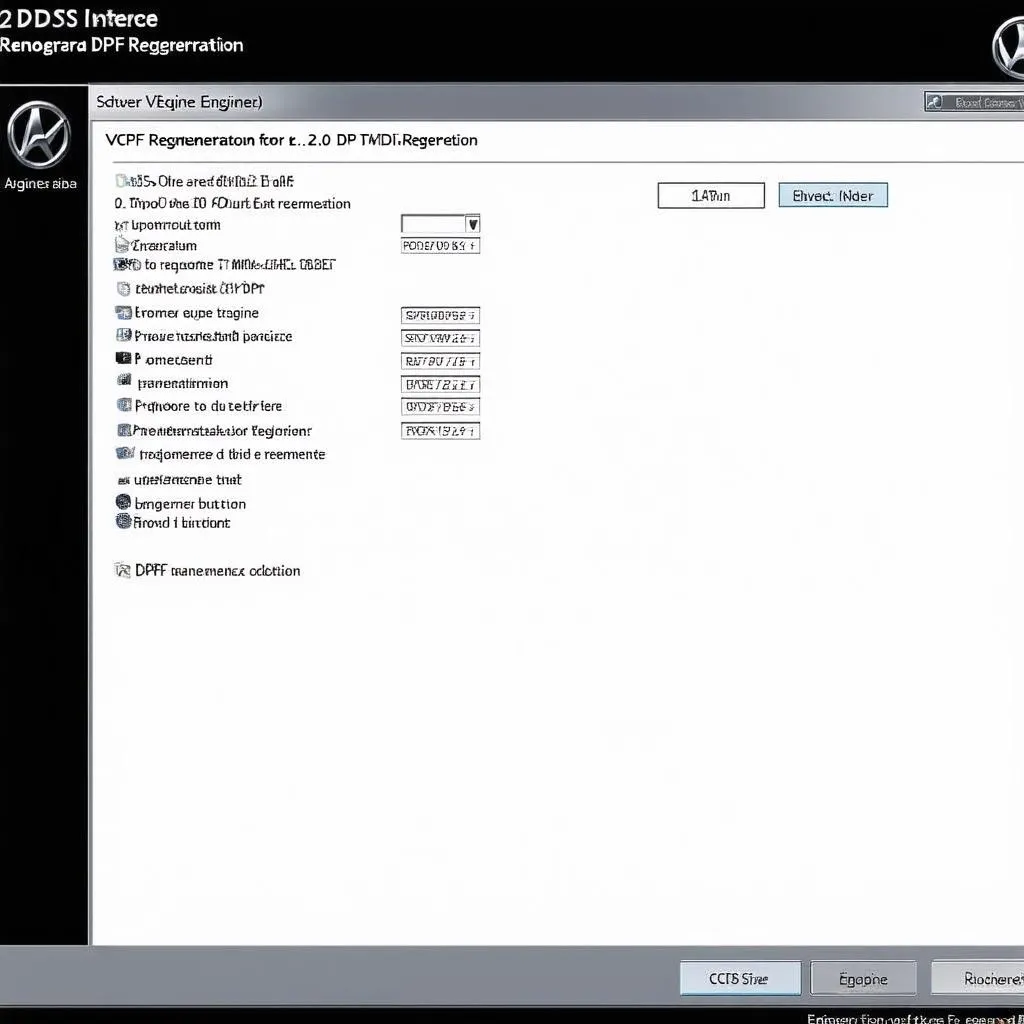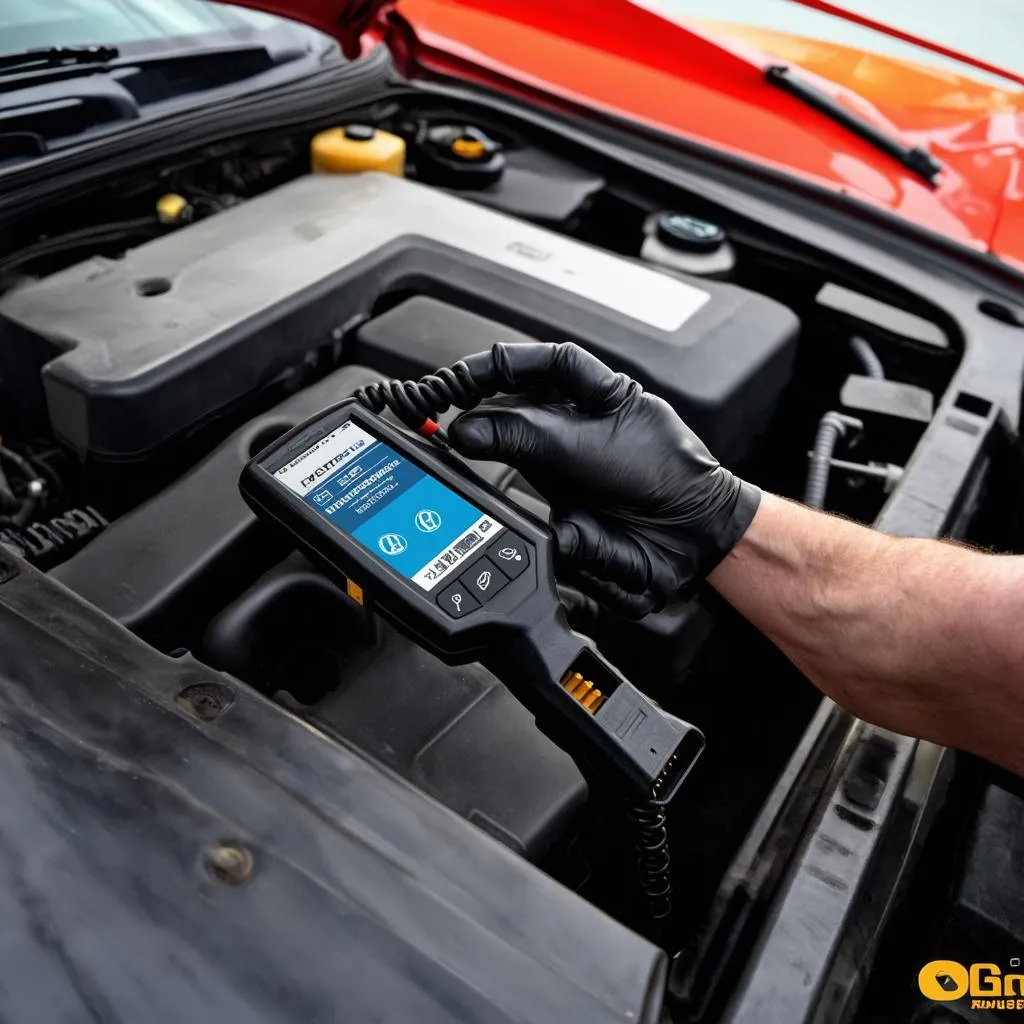As a car owner, especially one with a 2.0 TDI engine, you might have come across the terms “DPF” and “regeneration.” These are crucial aspects of your vehicle’s emissions system, and understanding them can save you from costly repairs down the line. This article will delve into the world of VCDS DPF regeneration for 2.0 TDI engines, providing valuable insights for both seasoned mechanics and car enthusiasts.
What is a DPF and Why Should You Care?
DPF stands for Diesel Particulate Filter, a critical component in modern diesel vehicles designed to trap harmful soot particles from the exhaust gas, reducing emissions and promoting cleaner air. However, like any filter, the DPF can become clogged over time. This is where DPF regeneration comes into play.
DPF Regeneration: Keeping Your Engine Running Clean
DPF regeneration is a process where the accumulated soot in the filter is burned off at a high temperature, turning it into ash. This process can occur passively during highway driving or actively through a forced regeneration initiated by the engine control unit (ECU).
VCDS and DPF Regeneration: A Powerful Combination
VCDS (VAG-COM Diagnostic System) is a diagnostic software that allows you to communicate with your vehicle’s ECU. While primarily used for troubleshooting and diagnostics, VCDS also offers the capability to initiate a forced DPF regeneration on 2.0 TDI engines.
Benefits of Using VCDS for DPF Regeneration
-
Control and Convenience: VCDS empowers you to perform a DPF regeneration at your convenience, eliminating the need to wait for the ECU to initiate the process automatically. This can be particularly useful for vehicles primarily used for short trips where a passive regeneration might not be possible.
-
Cost-Effectiveness: Regularly using VCDS for DPF regeneration can potentially extend the lifespan of your DPF, saving you from expensive replacements down the line.
-
Improved Performance: A clogged DPF can lead to reduced engine performance, fuel economy, and increased emissions. VCDS allows you to address these issues proactively.
 VCDS software screenshot
VCDS software screenshot
How to Perform a VCDS DPF Regeneration on a 2.0 TDI Engine
Disclaimer: While VCDS is a powerful tool, it’s essential to use it responsibly. Incorrectly performing a forced DPF regeneration can damage your vehicle. If you’re unsure about any step, consult a qualified mechanic.
Step-by-Step Guide:
-
Connect VCDS: Connect your VCDS interface to your vehicle’s OBD-II port and launch the software.
-
Select Engine Control Module: Navigate to the “Select Control Module” section and choose “Engine.”
-
Access Advanced Functions: Go to “Advanced Functions” and then select “Regeneration DPF.”
-
Initiate Regeneration: Follow the on-screen prompts to initiate the regeneration process. Ensure your vehicle is parked in a well-ventilated area, as the process will generate heat and smoke.
-
Monitor the Process: VCDS will display the progress of the regeneration. Once complete, you’ll receive a confirmation message.
 Mechanic performing DPF regeneration
Mechanic performing DPF regeneration
Precautions and Considerations
-
Safety First: DPF regeneration generates high temperatures. Ensure your vehicle is parked in a safe, well-ventilated area away from flammable materials.
-
Battery Health: A healthy battery is crucial for a successful DPF regeneration. Ensure your battery is fully charged or connect a battery charger to avoid interruptions.
-
Drive Cycle: After completing a forced regeneration, it’s recommended to take your vehicle for a 20-30 minute drive at highway speeds to allow the process to finalize completely.
FAQs about VCDS DPF Regeneration for 2.0 TDI Engines
Q: How often should I perform a DPF regeneration using VCDS?
A: There’s no fixed interval. Ideally, allow your vehicle’s ECU to manage regenerations automatically. However, consider using VCDS if you frequently drive short distances or notice a decrease in performance or fuel economy, indicating a potentially clogged DPF.
Q: Is it safe to interrupt a DPF regeneration?
A: It’s best to avoid interrupting the regeneration process. Frequent interruptions can lead to incomplete regenerations and potentially damage the DPF.
Q: Can I use VCDS for DPF regeneration on other engine types?
A: While VCDS supports various vehicle brands and models, the availability of the DPF regeneration function depends on the specific ECU and engine type. Refer to the VCDS documentation or consult with a specialist for compatibility information.
Conclusion
VCDS provides a powerful and convenient way to manage DPF regeneration on your 2.0 TDI engine. By understanding the process and following the recommended precautions, you can ensure optimal performance, fuel efficiency, and longevity of your vehicle’s emissions system. Remember, proactive maintenance is key to a smooth and cost-effective ownership experience.
For more information and detailed guidance on using VCDS for DPF regeneration and other diagnostic procedures, visit the CARDIAGTECH website at https://cardiagtech.com/. Their expertise and range of diagnostic tools can assist you in maintaining your vehicle’s optimal performance.


